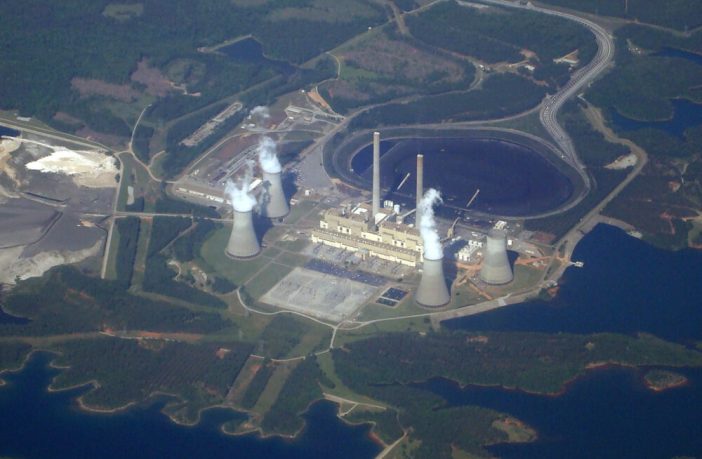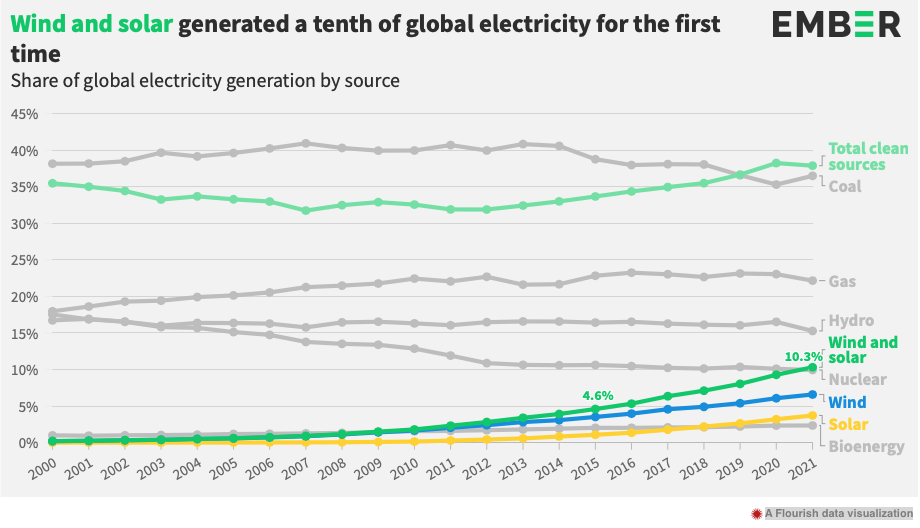Report: EMBER – Global Electricity Review 2022
- Wind and solar hit a tenth of global electricity, but the global electricity transition needs to sustain very high growth rates to replace coal and reduce emissions.
Solar generation rose 23% last year, and wind by 14%. Combined, this takes them to more than 10% of global electricity generation. All clean electricity sources generated 38% of the world’s electricity in 2021, more than coal (36%).
To be on a pathway that keeps global heating to 1.5 degrees, wind and solar need to sustain high compound growth rates of 20% every year to 2030. That’s the same rate of growth as their average over the last decade.
This is now eminently possible: wind and solar are the lowest cost source of electricity on a levelised basis, with ever-increasing global experience of integrating them into grids at high levels. With 50 individual countries now generating more than 10% of their electricity from these quick-to-deploy resources, and three countries already generating over 40%, it is already clear that these technologies are delivering.
Coal power rose by 9.0% in 2021 to 10,042 TWh, a new all-time high and 2% above the previous record set in 2018. It was the biggest percentage rise on record since at least 1985, taking coal generation to 36% of global electricity.
Power sector CO2 emissions rose to an all-time record, beating the previous record in 2018 by 3%. They rose by 7% in 2021 (778 million tonnes)—the biggest percentage rise since 2010, and the biggest absolute rise ever. The 7% rise follows a fall of just 3% in 2020, putting emissions higher than before the pandemic struck.
Link to full report HERE
Author: Bryan Groenendaal
















